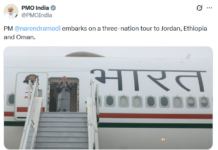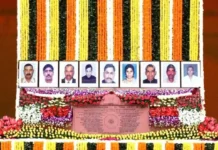 NEW DELHI: Prime Minister Narendra Modi is expected to unveil an ambitious financial inclusion scheme on the Independence Day tomorrow to provide bank accounts to 15 crore poor persons with an overdraft facility of Rs 5,000 and accident insurance of Rs 1 lakh.
NEW DELHI: Prime Minister Narendra Modi is expected to unveil an ambitious financial inclusion scheme on the Independence Day tomorrow to provide bank accounts to 15 crore poor persons with an overdraft facility of Rs 5,000 and accident insurance of Rs 1 lakh.
The-two phase Financial Inclusion Mission, which has been approved by the Cabinet, will be formally launched by Modi here at the end of this month, sources said.
The government is gearing up to operationalise the scheme across the country on August 28 or 29, they added.
The scheme, to be pushed by the government in a mission mode, seeks to provide two accounts to 7.5 crore identified households by August 2018.
The main features of the scheme include Rs 5,000 overdraft facility for Aadhar-linked accounts, Ru Pay Debit Card with inbuilt Rs 1 lakh accident insurance cover and minimum monthly remuneration of Rs 5,000 to business correspondents who will provide the last link between the account holders and the bank.
The new scheme, sources said, is a significant improvement over the UPA’s financial inclusion program.
The earlier scheme had no focus on households and no emphasis was given on urban financial inclusion, according to some experts. Besides, they maintained that there was a cumbersome Know Your Customer formality, restricting account opening.
Other deficiencies cited included lack of credit disbursement and 47 per cent of business correspondents being untraceable, resulting in inactive accounts.
The new scheme, sources said, has tried to address all the possible deficiencies and its monitoring would be done at state and district levels.
The ‘mission mode’ approach has been envisaged with the Finance Minister as head of the mission. The mission will have five different levels for overseeing the implementation of the program – three with the Centre and two with state governments.
The program assumes importance as 42 per cent of the population is still out of the formal banking system, and has to depend on money lenders for meeting their credit needs.
The present banking network of the country comprises a bank branch network of 1,15,082 and an ATM network of 1,60,055. Of these, 43,962 branches (38.2 per cent) and 23,334 ATMs (14.58 per cent) are in rural areas.
The government also proposes to launch an ad campaign for the ‘brand visibility’ of the program. Besides, the rural branches of banks would have a dedicated financial literacy cell.
The first phase of the mission, starting this month, would end in August next year.
In the second phase will be from 2015-2018, covering aspects such as micro insurance and pension schemes like ‘Swavlamban’.
Some of the Phase II activities would also be carried out in Phase I.–PTI






